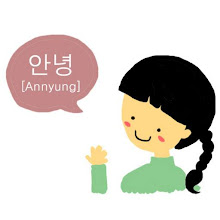가: 웨이밍 씨가 오늘 학교에 안 왔네요.
Wei-Ming didn't come to school today.
나: 어제 몸이 안 좋다고 했는데 많이 아픈 모양이에요.
Yesterday she said she didn't feel well. It looks like really sick.
가: 저기 아키라씨가 가네요!
There goes Akira!
나: 등산복을 입은 걸 보니까 산에 가는 모양이에요.
Judging from the hiking clothes he’s wearing, it looks like he's heading to the mountains.
Meaning “shape” or “appearance”', 모양 is used here to express a particular condition or state. This expression is thus used when attempting to infer or guess the circumstances of a particular situation after directly seeing it or hearing about it. It is often used together with -(으)ㄴ/는 걸 보니까 which comes earlier in the sentence and expresses the basis for making the inference or guess.

가: 소영 씨가 회사를 그만두었다면서요?
I heard that Soyeong quit working for the company.
나: 네, 회사 일이 정말 힘들었던 모양이에요.
Yeah, apparently the job was really difficult for her.
가: 제나 씨가 아직 안 일어났어요?
Has Jena not woken up yet?
나: 방에 영화 DVD가 있는 걸 보니까 밤늦게까지 영화를 본 모양이에요.
Seeing that there are some DVDs in her room, I reckon she watched movies until late at night.
가: 주영 씨가 방학에 뭐 하는지 아세요?
Do you know what Juyeong is doing during vacation?
나: 비행기 표를 예매한 걸 보니까 고향에 갈 모양이에요.
Judging from the fact that she reserved a plane ticket, I'm guessing that she's going to her hometown.
1. Because this expression is used to express the speaker's inference or guess based upon having seen or heard about the situation being discussed, it cannot be used to describe something the speaker did himself/ herself.
• 새로 생긴 식당에서 먹어 봤는데 음식이 괜찮은 모양이에요. (X)
->새로 생긴 식당에서 먹어 봤는데 음식이 괜찮은 것 같아요.(O)
2. This expression cannot be used when the basis for the inference is not an objective fact, that is, when the speaker is simply describing something he or she only thinks, or subjectively believes, to be the case.
• 내 생각에 저기 앉아 있는 여자는 공부| 잘하는 모양이에요. (X)
->내 생각에 저기 앉아 있는 여자는 공부를 잘할 것 같아요. (O)
Here, because the speaker is expressing a subjective feeling, -(으)ㄴ/는 모양이다 cannot be used. Instead, -(으)ㄹ 것 같다 can be used to express such subjective notions.
>> You can click on the title of each grammar below to learn the other grammars which also express 'Conjecture and Supposition':
01. -아/어 보이다
02. -(으)ㄴ/는 모양이다
03. -(으)ㄹ 텐데
04. -(으)ㄹ 테니까
05. -(으)ㄹ걸요
06. -(으)ㄴ/는/(으)ㄹ 줄 몰랐다[알았다]
07. -(으)ㄹ지도 모르다
>> Full of Intermediate grammars: Click here
Wei-Ming didn't come to school today.
나: 어제 몸이 안 좋다고 했는데 많이 아픈 모양이에요.
Yesterday she said she didn't feel well. It looks like really sick.
가: 저기 아키라씨가 가네요!
There goes Akira!
나: 등산복을 입은 걸 보니까 산에 가는 모양이에요.
Judging from the hiking clothes he’s wearing, it looks like he's heading to the mountains.
Meaning “shape” or “appearance”', 모양 is used here to express a particular condition or state. This expression is thus used when attempting to infer or guess the circumstances of a particular situation after directly seeing it or hearing about it. It is often used together with -(으)ㄴ/는 걸 보니까 which comes earlier in the sentence and expresses the basis for making the inference or guess.

가: 소영 씨가 회사를 그만두었다면서요?
I heard that Soyeong quit working for the company.
나: 네, 회사 일이 정말 힘들었던 모양이에요.
Yeah, apparently the job was really difficult for her.
가: 제나 씨가 아직 안 일어났어요?
Has Jena not woken up yet?
나: 방에 영화 DVD가 있는 걸 보니까 밤늦게까지 영화를 본 모양이에요.
Seeing that there are some DVDs in her room, I reckon she watched movies until late at night.
가: 주영 씨가 방학에 뭐 하는지 아세요?
Do you know what Juyeong is doing during vacation?
나: 비행기 표를 예매한 걸 보니까 고향에 갈 모양이에요.
Judging from the fact that she reserved a plane ticket, I'm guessing that she's going to her hometown.
1. Because this expression is used to express the speaker's inference or guess based upon having seen or heard about the situation being discussed, it cannot be used to describe something the speaker did himself/ herself.
• 새로 생긴 식당에서 먹어 봤는데 음식이 괜찮은 모양이에요. (X)
->새로 생긴 식당에서 먹어 봤는데 음식이 괜찮은 것 같아요.(O)
2. This expression cannot be used when the basis for the inference is not an objective fact, that is, when the speaker is simply describing something he or she only thinks, or subjectively believes, to be the case.
• 내 생각에 저기 앉아 있는 여자는 공부| 잘하는 모양이에요. (X)
->내 생각에 저기 앉아 있는 여자는 공부를 잘할 것 같아요. (O)
Here, because the speaker is expressing a subjective feeling, -(으)ㄴ/는 모양이다 cannot be used. Instead, -(으)ㄹ 것 같다 can be used to express such subjective notions.
>> You can click on the title of each grammar below to learn the other grammars which also express 'Conjecture and Supposition':
01. -아/어 보이다
02. -(으)ㄴ/는 모양이다
03. -(으)ㄹ 텐데
04. -(으)ㄹ 테니까
05. -(으)ㄹ걸요
06. -(으)ㄴ/는/(으)ㄹ 줄 몰랐다[알았다]
07. -(으)ㄹ지도 모르다
>> Full of Intermediate grammars: Click here




.jpg)





0 comments: